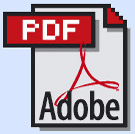CommentPress
Related Categories: Blogging and Content Management Systems | Social Networking Systems | Tools for Online Reading
Summary:
CommentPress was developed by the Institute for the Future of the Book as part of their ongoing experiments with “networked books”. First instituted in 2006 as part of McKenzie Wark’s GAM3R 7H3ORY 1.1 publication, the software was developed to work with WordPress and intended to reconfigure the nature of blog discussions. CommentPress allows respondents to post comments in the margin of the text, on a paragraph-by-paragraph or “whole page” basis. This breaks down the top-down hieararchy typical of blogs whereby a main post is positioned vertically above any commentary. Instead a reader may view the text and commentary at the same time.
Version 1.0 of CommentPress was released to the general public in July 2007 and the software has been used to generate discussion around Master’s Theses, scholarly articles, and books. (more…)
Research Clearinghouse (Individual)
Research Reports (Chronologically)
Research Reports (NRI)
Research Reports (SC)


